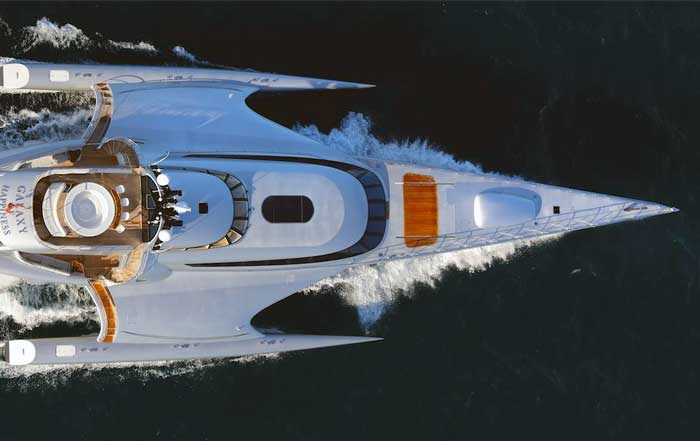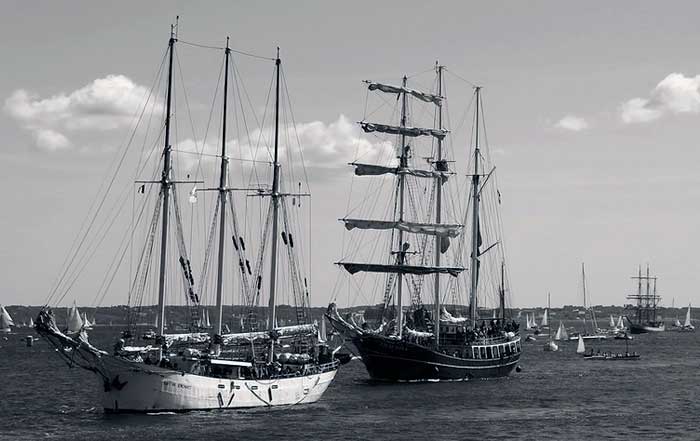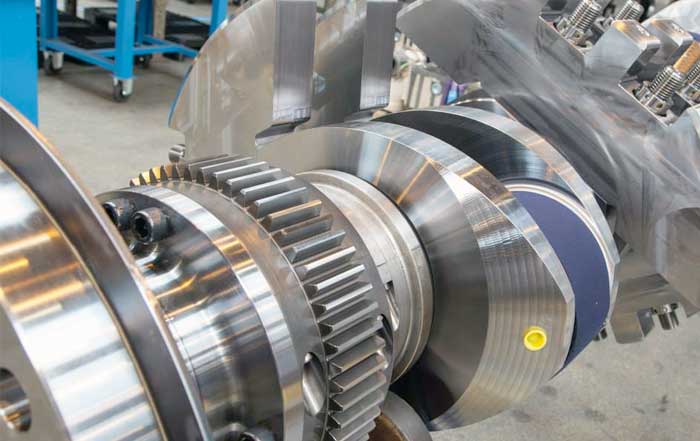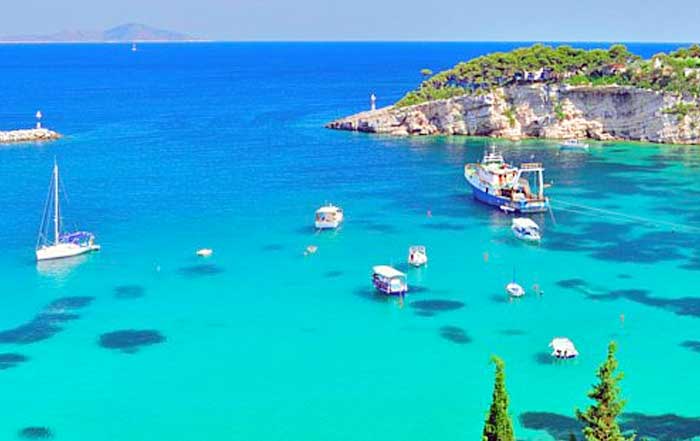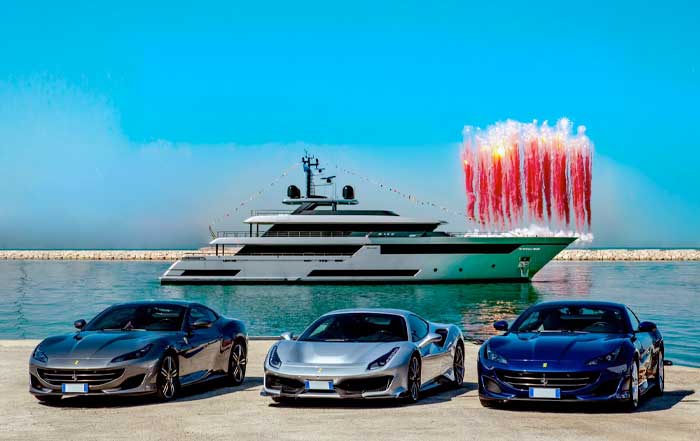As the global economy continues its dynamic recovery in 2025, the yachting industry stands at a fascinating crossroads of innovation, sustainability, and luxury lifestyle transformation. Once perceived primarily as a symbol of elite exclusivity, the world of yachting has evolved into a complex ecosystem of design ingenuity, technological excellence, environmental responsibility, and personalized experiences. The growth trajectory of the market has been fueled by advances in hybrid propulsion, smart automation, and shifting owner demographics—each reshaping what luxury and maritime adventure truly mean today.
According to data from Statista and SuperYacht Times, global yacht sales have continued to rise steadily, driven by demand from new markets across Asia-Pacific, the Middle East, and South America. The expansion of yacht infrastructure—from advanced marinas to refit facilities—has created a more inclusive ecosystem where innovation meets tradition. These changes are also reflected across the editorial insights and analyses featured in Yacht Review’s Business Section, where the evolution of ownership, charter management, and sustainability practices take center stage.
Luxury yachting today extends far beyond the vessel itself. It has become a narrative of experiences, craftsmanship, and environmental stewardship that defines the modern global traveler’s identity. In this rapidly changing environment, industry leaders and shipyards are finding themselves in a constant race to merge performance and comfort with responsible marine innovation.
Shifting Ownership Models and Market Dynamics
The post-pandemic years saw a surge in yacht purchases as high-net-worth individuals sought private and secure travel alternatives. However, by 2025, this trend has matured into a more diversified ownership landscape. Fractional ownership, charter pooling, and private club memberships now dominate many investment discussions, offering new pathways for enthusiasts to enter the market without full capital commitment. Companies such as Y.CO, Fraser Yachts, and Camper & Nicholsons have expanded their shared ownership models to meet evolving client expectations, enabling access to superyacht experiences once reserved for billionaires.
Chartering has also seen significant growth, supported by global booking platforms such as YachtCharterFleet and Boat International, which have simplified the process of finding, comparing, and booking vessels in destinations ranging from the Caribbean to the Mediterranean. For those seeking deeper insights into how these business models are changing, Yacht Review’s Global Section provides valuable updates on regional developments and industry collaborations.
The economic implications of this evolution are substantial. Fractional ownership and time-share models have increased utilization rates, reduced idle time for vessels, and created opportunities for refit yards and crew management firms. As a result, the sector is becoming less about ownership status and more about the freedom of experience—a shift that aligns with broader trends in luxury travel and lifestyle design.
Sustainability: The Core of Modern Yachting Philosophy
The emphasis on environmental responsibility has transformed every facet of yacht design, construction, and operation. The days of excessive fuel consumption and unchecked emissions are fading rapidly as the industry adopts cleaner technologies and sustainable practices. At the forefront of this transformation are hybrid propulsion systems, electric drives, and alternative fuels such as methanol and hydrogen, which are being integrated into next-generation vessels.
Builders like Feadship, Lürssen, and Sanlorenzo have pioneered hybrid superyacht models that balance efficiency with luxury, while organizations such as the Water Revolution Foundation and SeaKeepers Society continue to promote sustainable practices across the maritime community. Readers can explore related features on innovation and eco-friendly yacht building in Yacht Review’s Sustainability Section, where new materials, solar integration, and circular economy principles are frequently examined.
Technological advances in hull design, energy recovery systems, and advanced coatings have further reduced drag and fuel usage. Companies such as ABB Marine and Rolls-Royce Power Systems are pushing efficiency boundaries through smart energy management platforms and hybrid powertrains. Meanwhile, the rise of the “silent yacht”—vessels powered entirely by solar and electric systems, such as those from Silent-Yachts—signals a clear industry commitment to decarbonization.
These initiatives not only contribute to sustainability goals but also redefine the aesthetic and experiential dimensions of yachting. The quiet propulsion systems and advanced noise reduction technologies allow owners and guests to experience the ocean in its purest, most tranquil form—an essential element in the evolving appeal of yachting as a conscious luxury pursuit.
Design Innovation and Digital Transformation
In 2025, yacht design continues to evolve at the intersection of art, technology, and human experience. Shipyards have embraced a philosophy that merges minimalism, fluidity, and functionality, reflecting broader architectural trends seen in modern luxury homes and hotels. The boundaries between exterior and interior have blurred, with glass innovations, retractable balconies, and panoramic lounges offering uninterrupted views of the sea.
Design studios such as Winch Design, Nuvolari Lenard, and Espen Øino International have taken personalization to new heights, creating spaces that reflect the lifestyles and personalities of their owners. Digital prototyping and virtual reality now play a central role in the design process, allowing clients to explore detailed renderings before a single component is built. Advanced modeling tools powered by AI are optimizing hull structures and layouts for performance and comfort simultaneously.
To follow the latest developments in this field, readers can explore Yacht Review’s Design Section, which highlights new collaborations, concept vessels, and interviews with leading naval architects.
Digital transformation also extends into the user experience. Smart onboard systems managed through integrated apps and voice control are now standard in many luxury vessels. Raymarine, Garmin, and Simrad continue to redefine marine navigation through augmented interfaces and real-time environmental analytics. As connectivity improves through satellite broadband innovations from Starlink Maritime and Inmarsat, remote monitoring, predictive maintenance, and cloud-based systems are transforming how yachts are managed and serviced.
These digital ecosystems are enabling owners and captains to achieve unprecedented operational insight, reducing downtime and optimizing performance. The result is a seamless blend of luxury and intelligence—an ocean-going smart home capable of navigating the world’s waters with precision and comfort.
Yachting Industry Evolution 2025
Key milestones in luxury maritime innovation
2020-2022
Post-Pandemic Surge
High-net-worth individuals sought private, secure travel alternatives, driving unprecedented yacht purchase demand.
Market Shift2023
Fractional Ownership Revolution
Companies like Y.CO and Fraser Yachts expanded shared ownership models, democratizing superyacht access.
Business Model2024
Green Transition Acceleration
Hybrid propulsion, electric drives, and alternative fuels like methanol and hydrogen became mainstream in yacht design.
Sustainability2024-2025
Smart Yacht Era
AI-driven systems, predictive maintenance, and integrated automation transformed vessels into intelligent, data-driven platforms.
Technology2025
Global Cruising Expansion
Asia-Pacific, Middle East, and expedition destinations like Norwegian Fjords and Galápagos gained prominence.
Geography2025
Experience-Driven Luxury
Wellness suites, plant-based dining, multi-generational designs, and conscious gastronomy redefined onboard lifestyle.
LifestyleFuture Horizon
AI Meets Craftsmanship
Quantum computing, graphene composites, adaptive solar skins, and biomimetic design promise revolutionary vessel engineering.
InnovationThe Expanding Geography of Luxury Cruising
Global cruising patterns have evolved remarkably over the last decade, with yacht owners and charterers exploring destinations that once lay beyond traditional Mediterranean and Caribbean circuits. As marinas in emerging regions develop world-class infrastructure, the geography of luxury cruising is becoming far more diverse and adventurous. The Mediterranean still retains its dominance, with ports such as Monaco, Antibes, and Sardinia offering established glamour and convenience, yet the appeal of unspoiled destinations and unique cultural experiences continues to grow rapidly.
In Asia, locations like Phuket, Langkawi, and Bali have transformed into sophisticated yachting hubs, attracting both charter clients and private owners. The growth of regional infrastructure, combined with supportive regulatory policies from governments in Thailand and Indonesia, has encouraged longer cruising seasons and increased yacht registrations. Across the Indian Ocean, the Maldives and Seychelles remain dreamlike destinations for owners seeking solitude and natural beauty. These trends align with a broader global shift toward sustainable exploration, where privacy and environmental consciousness define the ultimate experience at sea. Readers can discover more about exclusive destinations and cruising experiences in Yacht Review’s Travel Section.
In Europe, the Ionian Islands, Croatia’s Dalmatian Coast, and the Norwegian Fjords have become prime examples of regions balancing authenticity with modern marina infrastructure. The Adriatic’s calm waters and UNESCO-protected towns such as Dubrovnik and Split offer a blend of historical immersion and seafaring comfort. Meanwhile, Northern Europe has witnessed the rise of expedition-style yachting, with vessels designed for Arctic navigation visiting destinations such as Svalbard and Greenland, enabling guests to explore glacial environments while maintaining the standards of ultra-luxury hospitality.
In the Americas, the Bahamas, Turks and Caicos, and Costa Rica’s Pacific coast have witnessed renewed interest due to sustainability-focused marinas and eco-cruise itineraries. The Galápagos Islands, under strict environmental guidelines enforced by the Ecuadorian government, continue to attract eco-conscious travelers seeking rare wildlife encounters. For insight into the technology supporting these new frontiers, Yacht Review’s Technology Section offers detailed analyses of navigation systems and digital innovations enabling safe and sustainable exploration.
Emerging Yacht Markets and New Ownership Demographics
One of the most significant developments in 2025’s yachting landscape is the expansion of ownership across non-traditional markets. Historically dominated by European and North American clients, the sector now experiences robust demand from Asia-Pacific and the Middle East. The rise of entrepreneurial wealth in Singapore, China, India, and the United Arab Emirates has created a wave of first-time owners who view yachts not only as status symbols but as lifestyle investments. Luxury brands such as Sunseeker, Azimut-Benetti, and Princess Yachts have adapted to these regional preferences with customized interiors, extended deck spaces, and culturally attuned entertainment layouts.
This geographic diversification has been accompanied by generational change. Millennials and Generation X owners now account for a growing share of new yacht purchases, with distinct preferences that emphasize sustainability, connectivity, and minimalist luxury. Unlike their predecessors, these owners often prioritize functionality and long-term value over traditional opulence. They are also more likely to integrate their yachting activities with professional pursuits, using vessels as remote offices or creative retreats—a phenomenon that parallels the rise of “work-from-anywhere” lifestyles.
Digitalization has played an essential role in engaging this younger demographic. Social media platforms like Instagram, YouTube, and TikTok serve as primary inspiration channels, where experiences aboard yachts are shared through immersive storytelling. Brokers and shipyards have adapted accordingly, offering interactive virtual tours, live-streamed boat shows, and digital concierge services that make the purchasing journey more transparent and accessible. Visitors can explore reviews of these innovations in Yacht Review’s Reviews Section, which covers vessel performance, interior design, and user experience with editorial depth.
The expansion of marina infrastructure has further fueled ownership interest. Destinations like Dubai Harbour, Port Adriano in Mallorca, and Sentosa Cove in Singapore have invested heavily in facilities capable of accommodating superyachts up to 180 meters. This expansion not only serves existing owners but also stimulates local economies through employment and ancillary tourism.
Economic Outlook and Investment Opportunities in 2025
From an investment standpoint, the yachting industry has matured into a stable yet innovative global market. The estimated value of the luxury yacht sector surpassed USD 13 billion in 2024, with forecasts predicting continued growth through 2030 as hybrid propulsion, digital charter management, and new marinas drive demand. The rebound of tourism, combined with the rise of experiential travel, ensures that yachting continues to attract both leisure buyers and institutional investors.
Private equity firms and family offices are increasingly viewing marinas, maintenance facilities, and charter fleets as viable long-term assets. In addition, new financial instruments—such as yacht-backed securities and asset-sharing platforms—are reshaping how capital flows through the industry. Companies including The Italian Sea Group and Ferretti Group, both of which went public in recent years, exemplify how the industry’s financial transparency and corporate governance have evolved. Readers can find further analyses of these market trends in Yacht Review’s Business Section, where expert insights connect financial data with maritime innovation.
The intersection of luxury and technology has also created fertile ground for collaboration. Fintech integration allows seamless charter payments and fractional ownership contracts through blockchain verification, while advanced digital twins are revolutionizing insurance and maintenance efficiency. These new layers of financial and technological sophistication position the industry as a serious investment category rather than a niche leisure pursuit.
However, rising costs related to regulation, crew salaries, and shipyard materials—especially those involving advanced composites and eco-certified teak—pose challenges to profitability. The industry’s adaptation to environmental policies, such as EU Green Deal measures and global emissions reporting standards, continues to drive both innovation and compliance complexity. In this context, understanding long-term capital expenditure and sustainable ROI is becoming as vital as design and experience.
Technology at Sea: The Rise of the Smart Yacht
The “smart yacht” has emerged as one of the defining symbols of maritime innovation in 2025. Leveraging advances in AI, automation, and connectivity, these vessels combine the intelligence of a modern data center with the craftsmanship of classic shipbuilding. Integrated control systems manage everything from climate and lighting to navigation and fuel efficiency, offering owners seamless control through mobile or voice-activated platforms.
Yacht management platforms like YachtEye, DeepBlue Soft, and Pinpoint Works have transformed how operators track systems, maintenance, and performance in real-time. AI-driven predictive analytics help prevent equipment failures and optimize engine performance, significantly reducing maintenance costs. The integration of machine learning extends even further, enabling yachts to learn owner preferences—from interior ambiance to cruising itineraries—creating a uniquely adaptive environment.
Connectivity has also undergone a revolution. The maritime broadband services of Starlink, OneWeb, and Inmarsat GX now deliver high-speed internet in previously inaccessible ocean regions, allowing seamless streaming, remote monitoring, and digital communication for crew and guests alike. For detailed features on these cutting-edge technologies, readers can explore Yacht Review’s Technology Insights, where onboard systems and navigation tools are examined through a technical lens.
Automation extends beyond onboard convenience; it redefines operational safety. Advanced autopilot and collision avoidance systems, supported by radar-AI fusion and augmented reality dashboards, provide captains with a level of situational awareness once unthinkable. The concept of autonomous tenders and support vessels is gaining traction, offering logistical assistance and enhancing operational flexibility. These developments underscore how the lines between luxury, innovation, and maritime engineering continue to blur.
The Evolution of the Luxury Yachting Lifestyle
Luxury yachting has always been a statement of freedom, but in 2025 it has evolved into something deeper—a reflection of how individuals define wellness, connectivity, and purpose at sea. Beyond traditional notions of opulence, modern owners are increasingly focused on how their vessels align with personal values, family experiences, and sustainable philosophies. Yachting now represents an intersection between exploration and balance, where the ocean becomes both playground and sanctuary.
Many owners are commissioning vessels designed to accommodate multi-generational travel. Family-oriented layouts include convertible cabins, dedicated play areas, and modular entertainment zones that foster shared experiences. The design ethos prioritizes togetherness without compromising privacy, creating spaces that feel as intimate as they are expansive. To explore the family-friendly innovations shaping yacht design, readers can visit Yacht Review’s Family Section, which highlights real-world case studies and evolving owner lifestyles.
The onboard experience itself has expanded into new domains of wellness and culture. Gyms, yoga studios, and meditation pods are now as common as dining salons, while spas equipped with ocean-view saunas and cryotherapy chambers redefine the meaning of relaxation at sea. Some superyachts now integrate full medical suites or telehealth access powered by digital health companies, ensuring safety and wellness during long-range voyages. These developments mirror the global surge in the wellness economy, as reported by Global Wellness Institute, and demonstrate how yachts have become floating extensions of holistic living.
Culinary trends are also transforming life onboard. With the rise of plant-based and sustainable dining, chefs now collaborate closely with marine biologists and local suppliers to source seasonal, ethical ingredients. Owners increasingly request menus aligned with dietary preferences, from organic Mediterranean cuisine to Japanese-inspired omakase dining. This emphasis on conscious gastronomy further blurs the boundary between luxury and environmental awareness, creating experiences that are indulgent yet responsible.
Regulation, Policy, and the Green Transition
As yachting’s environmental footprint comes under increasing scrutiny, 2025 has become a pivotal year for maritime policy and regulatory frameworks. Governments and international organizations are strengthening emissions standards and enforcing carbon accountability across the global fleet. The International Maritime Organization (IMO)’s updated energy efficiency regulations now apply to yachts over 24 meters, requiring owners to document fuel consumption and offset emissions where applicable.
In Europe, the European Union Emissions Trading System (EU ETS) has extended its reach to cover large private and commercial yachts operating in EU waters. Shipyards and management firms have responded by investing in research and compliance technologies. For instance, Feadship’s “Path to Zero” initiative and Benetti’s hybrid propulsion roadmap are directly aligned with these new expectations, setting measurable sustainability targets for future builds. Readers can learn about these strategies in greater detail at Yacht Review’s Sustainability Page.
At the same time, port authorities worldwide are introducing green marina certifications that reward low-emission operations and renewable energy use. Facilities in Monaco, Porto Montenegro, and Marina di Loano have set benchmarks for waste management, shore power connectivity, and water treatment. Similar projects in Australia, Singapore, and New Zealand are helping align Asia-Pacific marinas with international sustainability standards, signaling the industry’s readiness to embrace environmental responsibility globally.
This transition is not merely regulatory—it represents a shift in mindset. Owners, designers, and builders are increasingly aware that the industry’s long-term future depends on sustainable stewardship of the oceans. Initiatives like Blue ESG frameworks and The Ocean Cleanup partnerships highlight how yachting can contribute to global marine conservation. Rather than being part of the problem, many stakeholders now see themselves as ambassadors of oceanic preservation, turning yachting into a platform for ecological advocacy.
The Future of Innovation: Where Craftsmanship Meets AI
The future of yachting is being shaped by the fusion of human craftsmanship and artificial intelligence. While traditional shipyards remain rooted in artisanal excellence, advanced robotics and machine learning are transforming production processes with unprecedented precision. Computer-aided design now extends to predictive modeling, allowing engineers to simulate structural stress, hydrodynamics, and acoustic behavior before a single keel is laid.
Companies like Heesen Yachts, Oceanco, and Royal Huisman are leading the digital transformation of shipbuilding by integrating AI-driven workflow systems and 3D printing technologies. These tools enable the creation of complex, lightweight structures that optimize both performance and fuel efficiency. Meanwhile, generative design—powered by neural networks—has begun to influence interior aesthetics, producing organic, biomimetic forms that merge natural inspiration with digital creativity. Readers can delve into more of these advancements at Yacht Review’s Design Insights, where tradition and technology converge.
Artificial intelligence also plays a role in navigation, logistics, and maintenance. Predictive weather routing systems powered by deep learning algorithms help captains select optimal paths that minimize fuel consumption and avoid adverse conditions. Onboard AI assistants monitor systems health, detect anomalies, and even assist in voyage planning through natural language interfaces. These intelligent platforms embody the shift toward data-driven autonomy, empowering operators to achieve peak performance with minimal environmental impact.
Looking forward, the integration of quantum computing and next-generation materials could redefine yacht engineering entirely. Graphene-infused composites, self-healing paints, and adaptive solar skins are already being tested by advanced research programs in Europe and Asia. These innovations signal a future in which yachts become living entities—responsive, efficient, and seamlessly integrated with their marine environment.
Yachting as a Global Cultural Movement
Beyond the economics and technology, the yachting industry in 2025 represents a global cultural movement that celebrates freedom, craftsmanship, and cross-border collaboration. Major events such as the Monaco Yacht Show, Fort Lauderdale International Boat Show, and Singapore Yacht Show have become cultural touchpoints where shipyards, designers, and owners exchange ideas that influence broader lifestyle and design industries. These events, covered in depth at Yacht Review’s Events Section, illustrate how yachting connects art, architecture, and innovation under one global vision.
Media and entertainment have also embraced the maritime narrative. Streaming documentaries, luxury magazines, and social media influencers continue to shape public perception of yachting as both aspirational and accessible. Through this visibility, the industry is reaching new audiences who see yachts not as distant symbols of wealth but as vessels for exploration, creativity, and global connectivity. This cultural shift reinforces the role of yachting as a modern embodiment of adventure and personal freedom.
Moreover, as the industry continues to globalize, education and training have become essential. Maritime academies in the United Kingdom, the Netherlands, and Australia are expanding programs focused on sustainability, automation, and service excellence. Crew recruitment now emphasizes emotional intelligence, multilingual communication, and cross-cultural understanding—skills that reflect the cosmopolitan nature of yacht ownership today.
Conclusion: The Horizon Beyond 2025
Standing at the intersection of innovation, sustainability, and artistry, the yachting industry of 2025 is no longer defined by excess but by evolution. Its transformation reflects a broader societal desire to align pleasure with purpose, technology with tradition, and exploration with ethics. From the carbon-neutral shipyards of Northern Europe to the electric catamarans cruising the Andaman Sea, yachting has become a reflection of humanity’s ingenuity and its relationship with nature.
As Yacht Review continues to document this transformation through its dedicated sections on Cruising, News, Boats, and Lifestyle, one truth remains clear: the sea remains an eternal symbol of freedom, and those who navigate it are shaping a new era of conscious luxury. The horizon ahead is not defined by distance, but by vision—the shared commitment of an industry that is learning to move forward not only with power, but with purpose.

